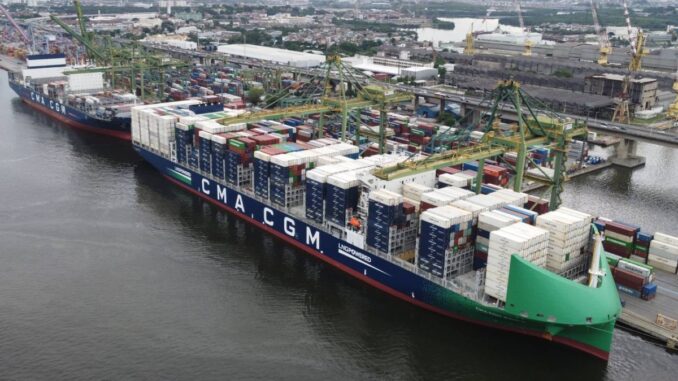
INTERNATIONAL Container Terminal Services Inc. (ICTSI) is advancing environmental sustainability with the development of the Luzon International Container Terminal (LICT) in Bauan, Batangas.
Set for completion by 2028, the terminal will be the Philippines’ largest privately funded marine project and the second-largest container facility after the Manila International Container Terminal (MICT).
LICT will play a key role in supporting the Philippines’ renewable energy goals, particularly in Southern Luzon. As the country transitions toward cleaner energy, the terminal will meet the growing demand for efficient, eco-friendly marine handling solutions.
The CMA CGM Bahia, a 13,200-TEU container vessel, docked at ICTSI’s Rio Brasil Terminal — one of five carbon-neutral terminals worldwide. Featuring advanced eco-friendly technologies such as an iCER system and a bow wind deflector, this ship significantly reduces carbon emissions and fuel consumption on its journey from Asia to South America. CONTRIBUTED PHOTO
Nathan Clarke, ICTSI vice president and head of global engineering for infrastructure and project delivery, said, “Our new Bauan terminal’s ability to accommodate large ships sets it apart and positions us as a leader in efficient and eco-conscious trade.”
The terminal’s design and construction will prioritize environmental sustainability, with ICTSI committed to minimizing disruption to the local ecosystem.
“We’re proud to drive positive change at home by developing a world-class port capable of handling the largest container vessels. This boosts our capacity and helps lead the shift toward a more sustainable shipping industry,” Clarke said.
A standout feature of LICT is its capacity to accommodate mega ships. These large vessels can transport significantly more cargo in fewer trips, reducing fuel consumption and greenhouse gas emissions.
“Handling mega ships allows us to lead the shift toward a more sustainable shipping industry,” Clarke noted, emphasizing their role in lowering carbon emissions per container.
Mega ships at LICT will integrate green technologies, including energy-efficient engines and cleaner fuels like liquefied natural gas (LNG).
With streamlined designs, larger ships use less fuel per TEU (twenty-foot equivalent unit), making them more sustainable.
Clarke said, “By adopting the latest green technologies, we’re ensuring that our operations contribute to a sustainable future.”
In addition to reducing emissions, mega ships help preserve marine biodiversity by decreasing the number of vessels at sea, thus limiting disruptions to marine life.
“Fewer ships mean less ecological damage, which aligns with our commitment to marine conservation,” Clarke said.
Mega ships are also equipped with ballast water management systems to prevent the spread of invasive species.
The LICT terminal underscores ICTSI’s commitment to both economic growth and environmental responsibility. Once completed, the terminal will strengthen the Philippines’ position in global trade and serve as a model for sustainable shipping.
The project demonstrates that progress and environmental protection can go hand in hand, setting a standard for the future of the maritime industry.


Be the first to comment